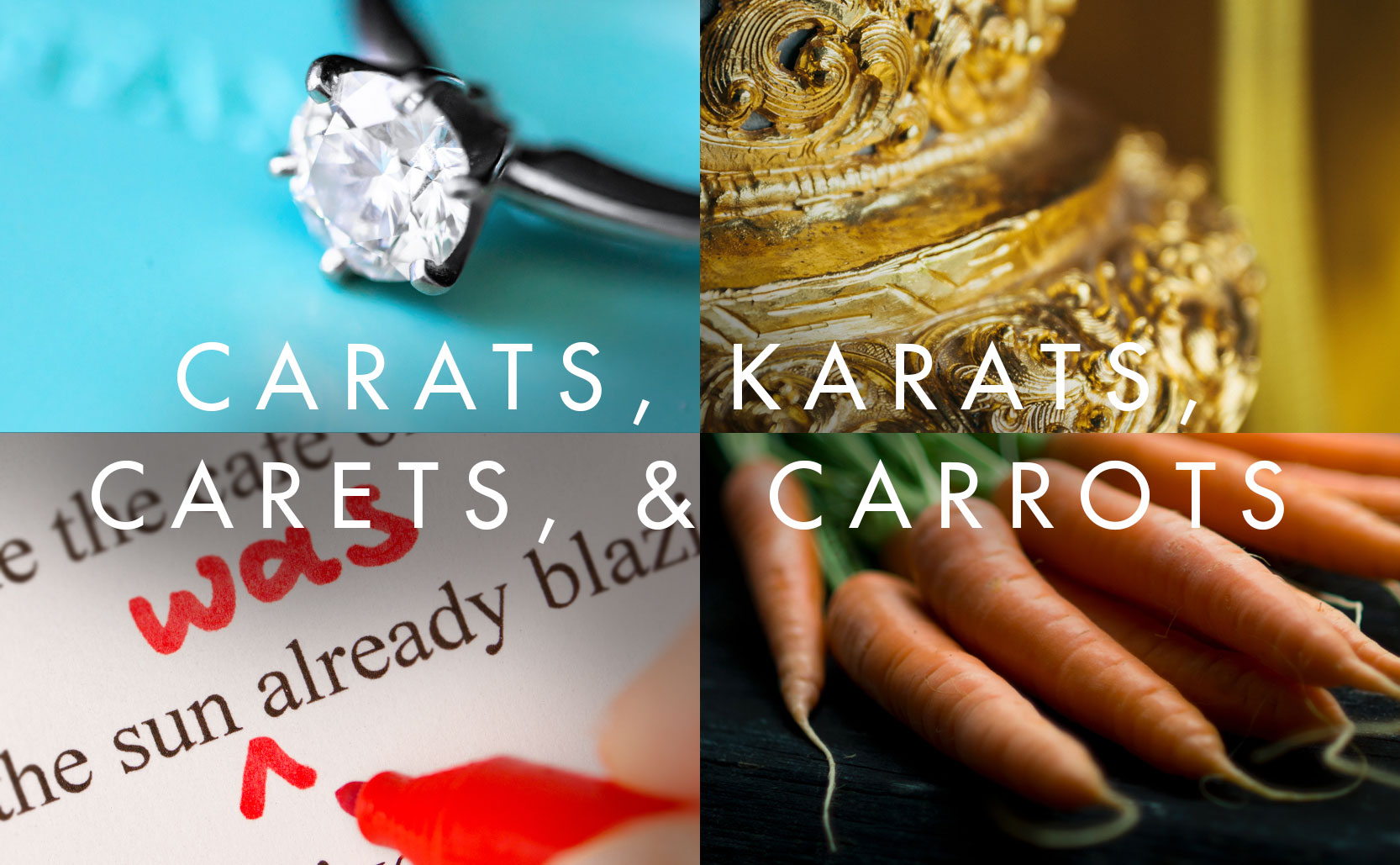Carats, Karats, Carets, & Carrots
A crash-course on Carats (measures gems & pearls), Karats (measures gold purity), Carets (a symbol), and Carrots (popular with humans & rabbits)
Carat
The carat is a unit of measurement for the mass of gemstones and pearls. Each carat is equal to 200mg of mass. So the more carats, the larger the stone / pearl (basically the more it weighs). The word carat comes from the Italian “carato”, which comes from the Arabic “qirat” which means “fruit of the carob tree” and also “weight of 4 grains”, which also comes from the Greek “keration” for both the carob bean and a small weight.
Karat
Karat with a “k” is a measurement of gold purity. It comes from the same root word as Carat with a “c”, from the Greek “keration”. Gold products are frequently alloys, different blends of gold and one or more other metals. The karat measuring system is a 24 part system and tells you what the ratio is of gold to other metals. So 1 karat gold is 1 part gold mixed with 23 parts other metal(s). Pure gold is 24 karat and contains no other metals.
Interestingly, pure 24 karat gold is fairly soft and not very resilient for jewelry or coins. Silver, copper, and zinc have been popular metals to pair with gold. These other metals strengthen the gold to make it harder. This is not true of lead, which was sometimes used to make fake gold coins. This is where the idea of biting a gold coin comes from. Most real gold coins were hardened alloys and would not leave a tooth mark when bit, but fake gold coins used lead which would be soft and leave a mark.
Caret
A caret is this ^ , which is a typographical mark used by proofreaders to show where something needs to be inserted into an area of text. Caret comes from Latin for “there is lacking” or “it lacks.”
Carrot
Finally, the carrot we are most familiar with is the vegetable, which originated in Persia. Its name also comes from Greek but from “karōtón” meaning horn, since the vegetable has a slightly horn-like shape. Carrots are a healthy vegetable full of beta-Carotene which is a red-orange colored organic pigment. When we eat beta-Carotene it synthesizes into Vitamin A which is good for you (… in moderation). Due to its color, storing extremely excessive amounts of beta-Carotene (eating way too many carrots) has the side-effect of turning a person’s skin orange through stored deposits in the skin cells.
Under normal circumstances however, beta-Carotene is converted into Vitamin A and can give us healthy skin, a better immune system, and good vision. This last part about better vision is the foundation of the myth that British WWII pilots were such good shots because they ate their carrots. In reality, they secretly had on-board radar and didn’t want the Germans to know about it, so they started a propaganda campaign saying their ace shooing was all due to carrots (which the British had an abundance of).


